To be a girl has always meant to be debated. In a way, it was business as usual when our social media feeds were loaded with Barbie, “girl dinner,” and the girl-condemnation that followed.
The striking difference this time was it was the girls themselves leading the conversations. It was girls themselves scrutinizing what it meant to be a girl who only sees women as a market demographic.
Young STAR spoke with four women about the rise of the girl and the ways we can (re)construct our girlhood outside of what has been prescribed to us by brands and for-profit social media apps. In some way, this is a practice in generation, in culture production. Girl as producer and not just consumer. Girl as active participant, as creator.
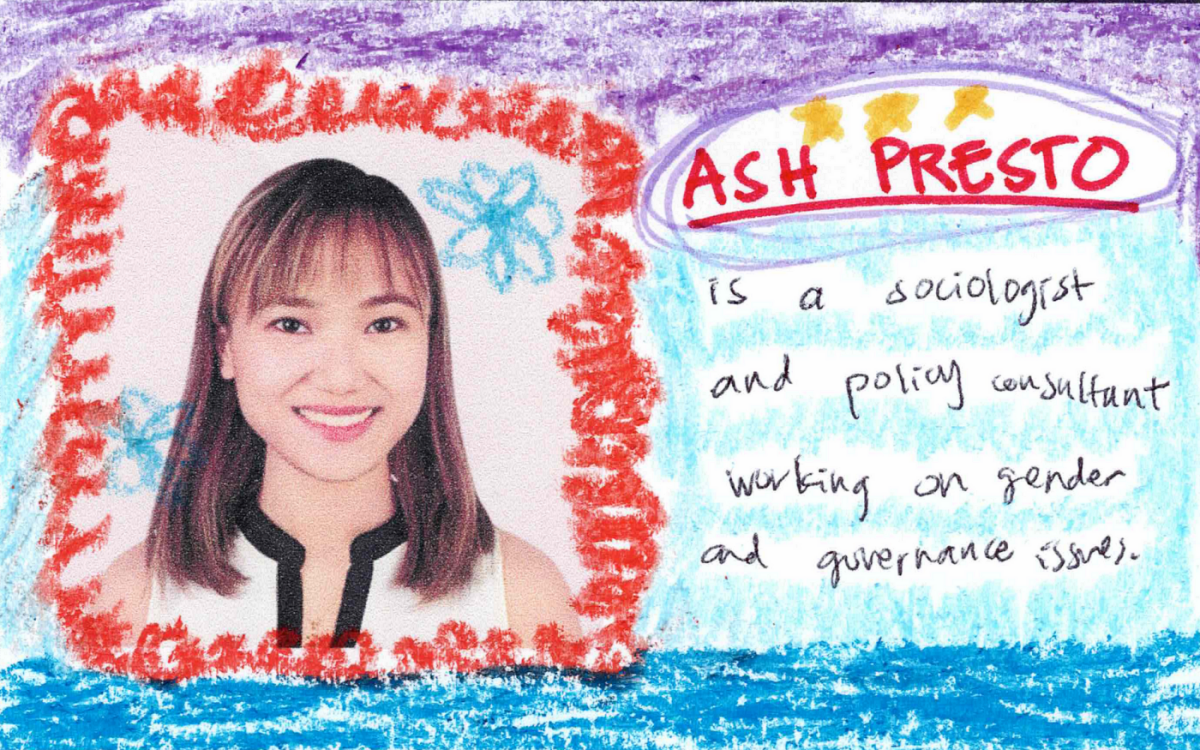
Ash Presto
Ash is a sociologist and policy consultant working on gender and governance issues.
What is girlhood, and what does it mean that it has become so popular?
As a sociologist, I would say that girlhood is a social construct, and different groups and communities will have different experiences regarding this construct. A huge factor (in its popularity) was the heavy marketing of movies like Barbie.
Movies like Barbie play (a role in) socializing girls, and in that sense, very important ‘yung movie na ‘to kasi they resist the stereotypical gender roles of women na you have to please your Kens and just be a beautiful partner (to them). But we also have to be mindful that Barbie depicts a world that is very capitalistic and upper middle class.
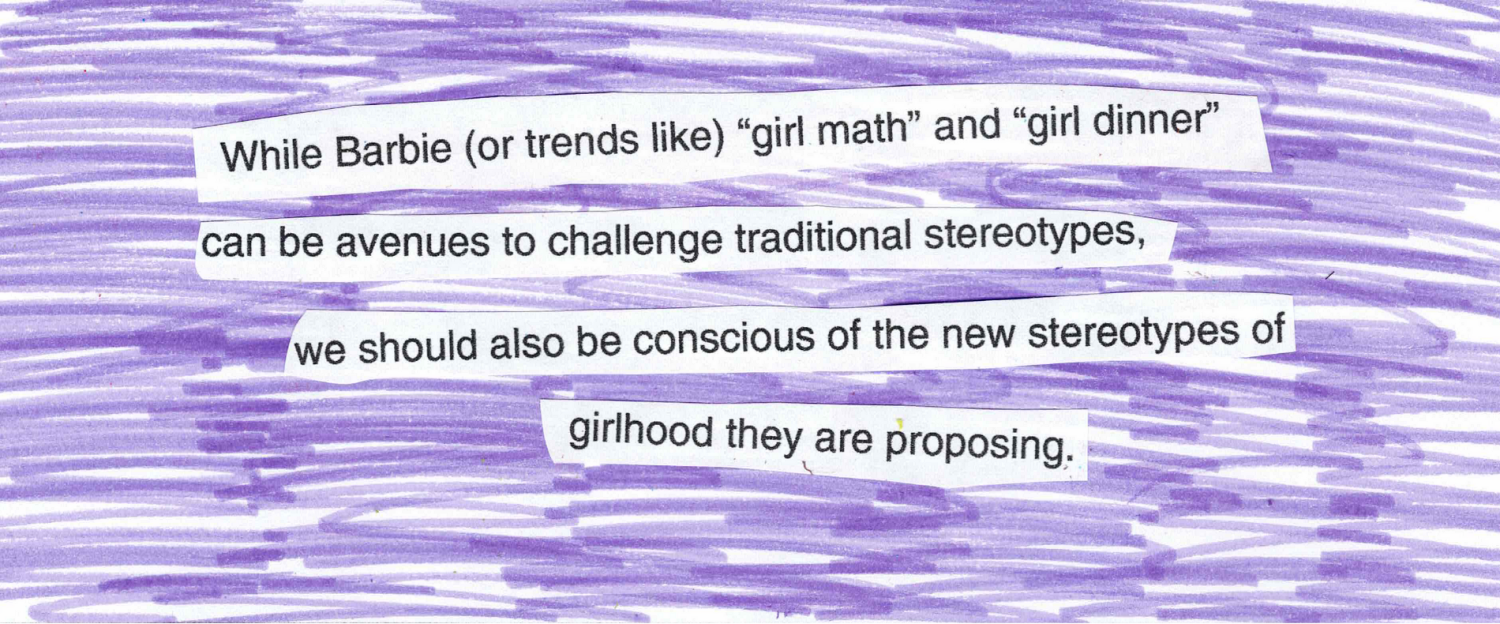
While Barbie (or trends like) “girl math” and “girl dinner” can be avenues to challenge traditional stereotypes, we should also be conscious of the new stereotypes of girlhood they are proposing. Hindi siya necessarily inclusive and representative of all girls.
When it comes to the alarm that girlhood is increasingly becoming commodified, we need to recognize that in some communities, girls might not even have the disposable income to participate in moments of capitalist effervescence–what about them?
Can we use the current discussions about girlhood as a bridge to introduce the feminist struggle to more people, especially young girls?
The feminist struggle is inherently inclusive, so the answer is always yes. The next question is how. Hindi dahil a movie says it’s feminist, you stop there. The challenge is to dig deeper and ask how you can go beyond your own circle. We need to reach out and listen to people na hindi nakakapag-participate sa ganitong enterprise kasi mas powerful ‘yung boses nila kesa sa pelikula.
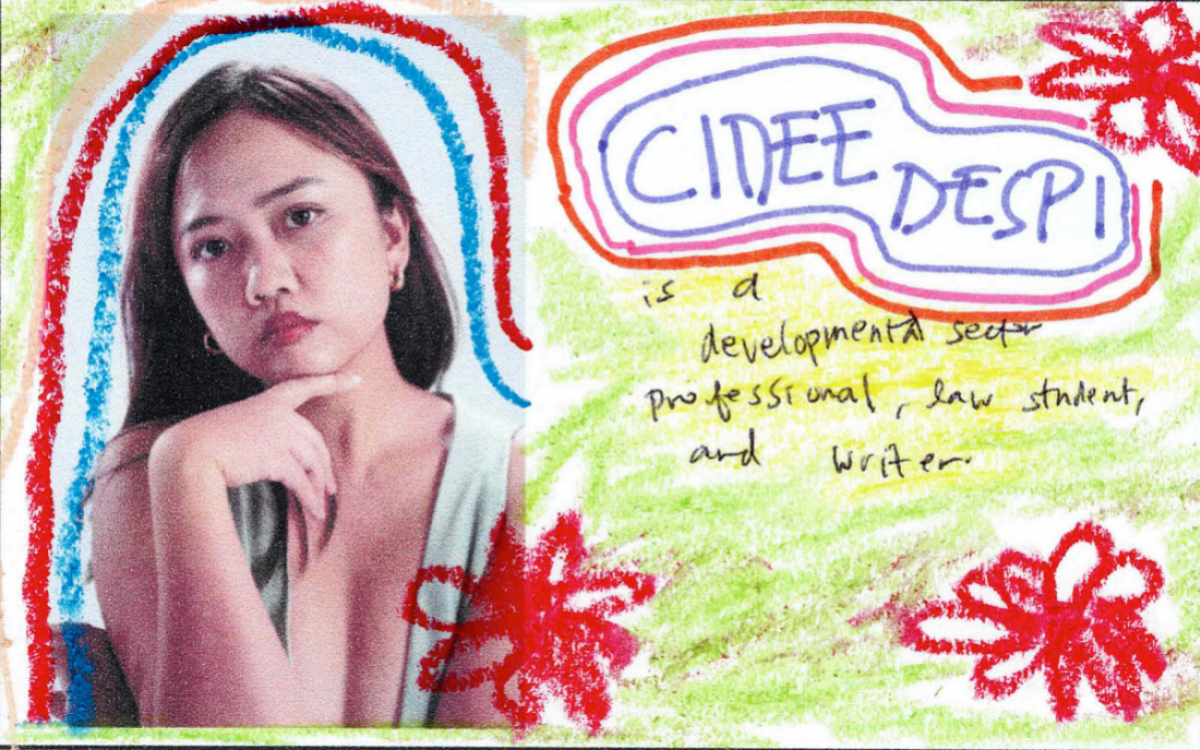
Cidee Despi
Cidee is many things at once—a development sector professional, law student, and a writer, mainly, but also an enjoyer of many hobbies. She is everywhere on social media as @cideeeee. She lives with two cats.
What does the rise of girlhood mean?
I understand girlhood to mean that, as adults now, we have come to realize the complexities of what we have gone through as girls; it’s become popular because we’re all trying to make sense of it now.
The whole “rise of the girl” has two sides. It’s super cool that we’re embracing it. But (with trends like) “I’m just a girl, I can’t do math” or the stay-at-home girlfriend, minsan nagme-merge ‘yung love natin for girlhood and ‘yung essentialist and antiquated ideas about the role of women in society. It’s very insidious, the way it creeps up on us.

What do you think of the conversations women have been having about the commodification of girlhood?
It’s not new to be told as a woman na, to be socially accepted, you need to look a certain way so you need to buy this and that.
What’s alarming now is the intensity of it, and trends associated with being a girl move very quickly. There are many attempts to flatten out the multitudes of being a woman by making sure that whatever personas (we aspire to) are readily available for consumption. “You want to be a Clean Girl? You need to own this”—to us it’s nothing serious; I’m just buying Dior lip oil. But (when we subscribe to the idea that) we can be a certain kind of girl by buying something, parang bumibili lang tayo ng personality off the rack. May flattening out of being a woman, when we’re so much more complex than that.
Can we ever unlink girlhood from consumption?
My challenge for myself these days is to make sure my life is generative. The lives of a lot of young girls are not as generative anymore because they live on the internet—aside from being constrained at home because of the pandemic, there’s not much life outside the home and work or school.
We aspire first for an aesthetic before we learn about ourselves. There’s no work that we put in to understand what we like. Even just listening to music these days, algorithms give you something you probably like already. There was a sense of discovery before—there’s not a lot of that right now, just consumption. The alternative is to go offline a little bit, engage outside the internet.
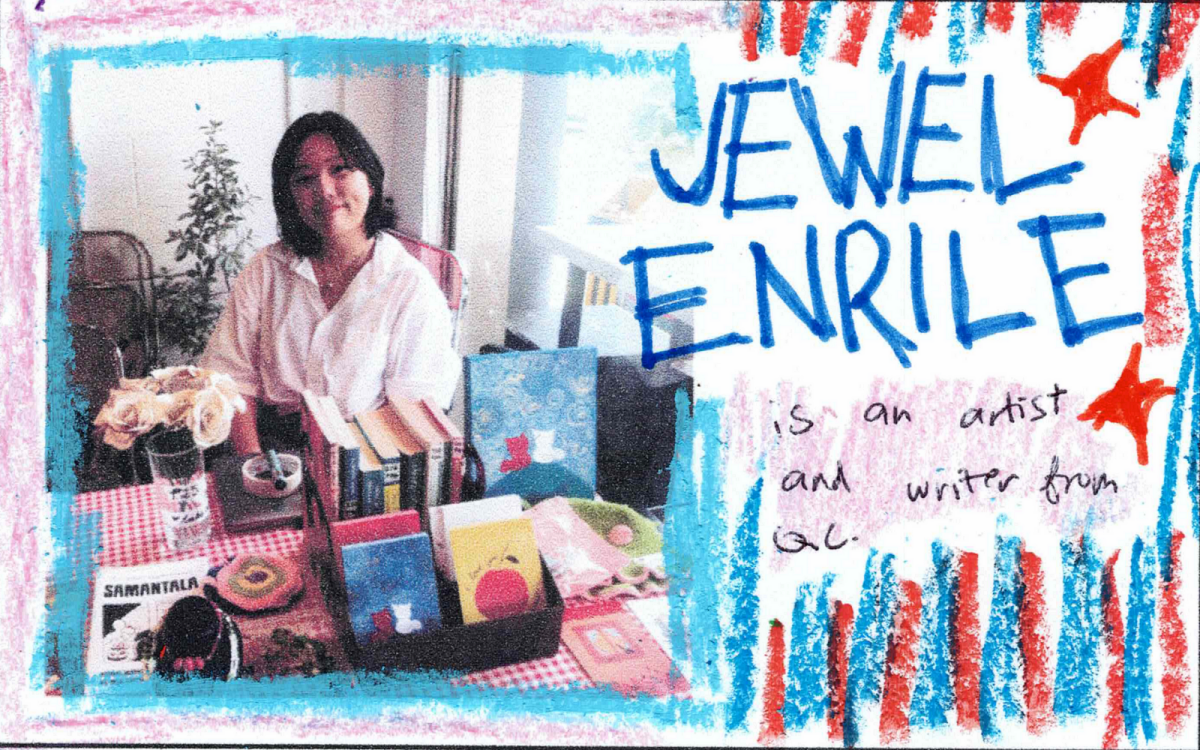
Jewel Elizabeth L. Enrile
Jewel creates art and writes while in Quezon City, Philippines. She likes making collages and throwing events for queer Filipinas.
What do you think of conversations about the commodification of girlhood?
Girlhood to me is community with other women, encapsulated by the shared experiences I have with them. And while it’s sad for anything that’s genuine and human to be co-opted by corporations, I wasn’t really surprised (that it happened with girlhood). An intrinsic part of girlhood is knowing that so much of you is assigned value because it’s marketable.
Is there a way we can preserve what’s ours from being co-opted?
Is there a way in a world with capitalism? Maybe now that we’re more aware of the community we have with each other—the secret language we share—the next step is to think of ways to be in solidarity more. To actually apply these nostalgic, sentimental feelings about the girls in your life, the people you were girls with, into more active things.
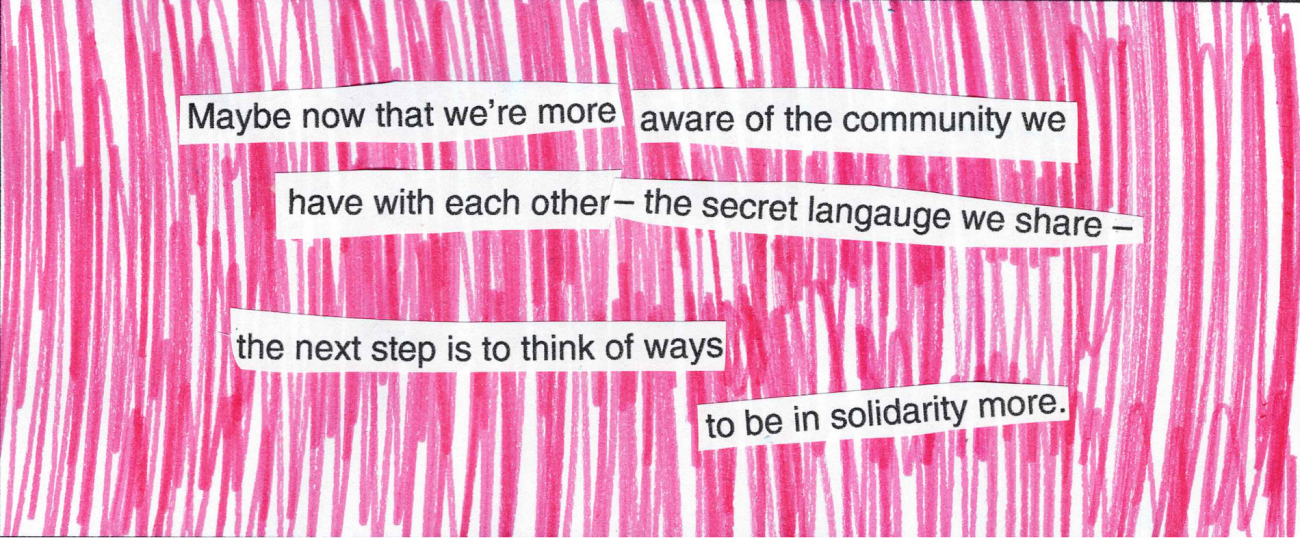
What has it been like, seeing so much discussion about girlhood?
I love that women are at the forefront of the discussion, and they’ve been pointing out that we need to define ourselves in a much better light. My girlfriend identifies as transmasculine but uses she/her pronouns, and we’ve had discussions about how she felt she had to be a guy because the notion of a woman aligning with her ambitions wasn’t there when she was a kid. If she couldn’t be this kind of woman, she must be a guy. There’s so much hyperfemininity surrounding girlhood and it makes me wonder about the women who don’t express themselves that way. There have been criticisms of (our notions of girlhood), and it’s great that people are talking about it. It’s a net positive.

Marion Abilene Navarro
Marion is a teaching associate at the Department of Behavioral Sciences, UP Manila and is currently pursuing graduate studies in Clinical Psychology at UP Diliman. She is an advocate for mental health and women's rights, and a believer in the power of the youth and girls' collective action.
What is the effect of the commodification of girlhood on women?
Kung hindi ito mag-eexist outside of consumerism, ang girlhood natin ay mamomomold ng gender stereotypes ng capitalists and colonialists. Tapos 'yung pinambibili natin (ng materials to express our girlhood), ginagamit siya ng capitalists to fund the patriarchy, so parang binibili mo ang sarili mong shackles. At kapag nacocommodify ang girlhood, nagiging very exclusive ito at nagca-cater na lang sa mga elite.
Where do you think this popularity of girlhood came from?
Napaka-isolating ng buhay ngayon. Meron tayong need to belong dahil hindi tayo makapag-usap-usap sa capitalist society na very alienating. Ginagamit natin ‘yung materials linked with girlhood to communicate with each other. So ang capitalism, siya ang gumawa ng problem of isolation and alienation, and magpe-present siya ng solusyon na siya rin ang gumawa.
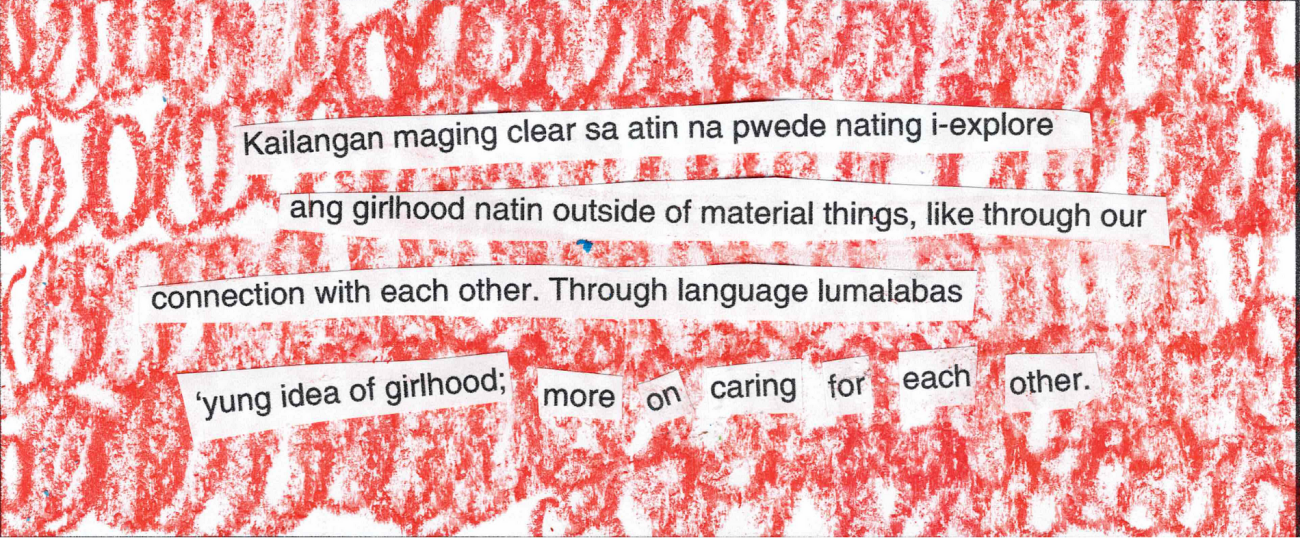
Feeling ko factor din (sa pagiging materialistic ng girlhood natin) ‘yung sentimentality natin as Filipinos. Nag-aattach tayo ng meaning sa material things. ‘Pag may binigay ako sa’yo, like a friendship bracelet, iniisip ko na a part of me is with you.
What does a girlhood outside of consumerism look like?
Kailangan maging clear sa atin na pwede nating i-explore ang girlhood natin outside of material things, like through our connection with each other. Dito lumalabas ‘yung importance ng being part of a collective—nagkakaroon kayo ng space na pag-usapan ‘yung girlhood niyo. Through language lumalabas ‘yung idea of girlhood; more on caring for each other.
From this sense of belongingness (that you feel in collectives), doon na natin mapag-uusapan ‘yung common frustrations and struggles natin. On your own, akala mo problem mo lang siya, pero makikita mo (na common experience siya). Eventually, (marerealize natin na) kailangan natin siyang ipaglaban para sa girls after us.
Produced by Andrea Panaligan
Banner image by Louise Anndrea F. Decena and unardent

